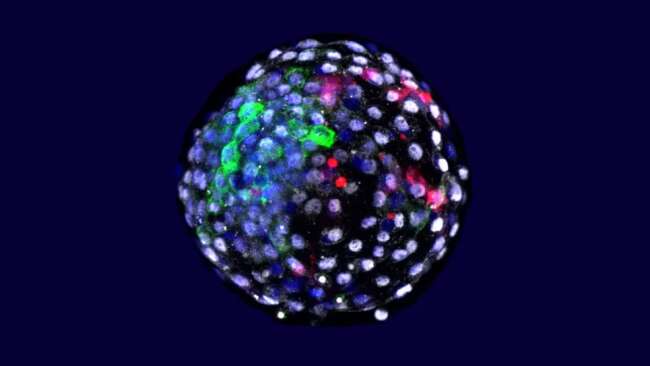Human-monkey chimera embryos generated by scientists from China and the US shown to survive for up to 20 days.
A chimera is an organism containing cells from two or more species. Over the years, scientists have conducted multiple experiments aimed at creating a human-animal hybrid. Not surprisingly, the topic has been a centre of huge controversy across the world. So much so that in 2008 the Catholic Church called such experiments ‘monstrous’ and worth banning. In 2019, scientists made the first breakthrough in chimeric embryos when the biologist, Juan Carlos Izpisúa Belmonte created the world’s first human-monkey chimera embryos. However, the embryos contained a low number of successfully integrated human cells.
Now, a team of scientists from China and the US have further built on the research and grown chimeric embryos for up to 20 days. First, the researchers created monkey embryos in the lab. Then, on day 6, researchers injected 25 human stem cells into each of the 132 monkey embryos. A day later, scientists noticed the presence of human cells within the human-monkey chimeras. However, after 10 days the embryos began to die, and by day 19 only three embryos remained alive. Despite the short survival, the number of human cells in the embryos remained high throughout the time period. This is the longest chimeric embryos have shown to survive in a petri dish.
Generation of a chimera between human and non-human primate, a species more closely related to humans along the evolutionary timeline than all previously used species, will allow us to gain better insight into whether there are evolutionarily imposed barriers to chimera generation and if there are any means by which we can overcome them.
Professor Izpisua Belmonte, senior author
The study is available in the journal Cell.
The Big Question is Why?
Next, the researchers plan to further study the communication pathways between the two species’ cells. Therefore, allowing scientists to enhance interspecies communication in chimeras.
According to the study authors, their work can help study the progression of diseases and potentially aid organ transplants. Something that is currently not possible in the available animal models. Moreover, it can allow scientists to test out various drugs.
The long-term goal of this research team is to grow human organs in pigs—kidneys, livers, hearts, etc. They want to do that to make more human organs for transplants. Tens of thousands of people die every year in the U.S. on a transplant list, waiting for a transplant.
Henry Greely, coauthor
However, the human-animal hybrid poses many ethical and legal concerns for scientists. Although the team destroyed all embryos within 20 days of the experiment, some question what if they weren’t. Had the embryos been allowed to develop a bit further; would they be considered human?
It is far too early to predict the implications of such research; however, there is a need for proper ethical, legal, and social guidelines for such work.




